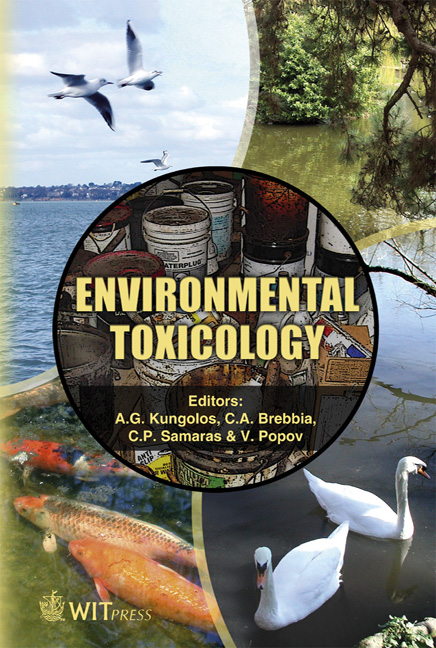Kinetics Of Nitrobenzene Biotransformation
Price
Free (open access)
Transaction
Volume
10
Pages
7
Published
2006
Size
363 kb
Paper DOI
10.2495/ETOX060331
Copyright
WIT Press
Author(s)
A. V. N. Swamy & Y. Anjaneyulu
Abstract
Nitrobenzene and substituted aromatics like nitro-chlorobenzene, aniline, and nitro-toluene containing chlorine, amino and methyl groups are recalcitrant in nature. These molecules are both anthropogenic and xenobiotic. Nitro benzene and nitro aromatic compounds are environmental pollutants discharged through wastewaters from nitro aromatic manufacturing plants. Nitrobenzene and other aromatics are toxic to several forms of aquatic life. However, biological transformation of nitrobenzene to non-toxic entities exists in specialized microbes, which have enzymes of aromatic catabolic pathways. Transformation of nitrobenzene is also inhibited by the presence of other toxic materials such as cyanides and sulphides that are present in industrial waste when nitrobenzene is the dominant carbonaceous material. Kinetics of the biotransformation of nitrobenzene using pure cultures isolated in the laboratory, mixture of consortium of the pooled cultures and enriched activated sludge biomass in pure substrates, mixed substrates and actual nitrobenzene plant waste has been estimated under varying input concentrations. Experimental results from these studies have been subjected to analysis by mathematical models using Monod’s and Haldane’s equations to test their validity in interpreting the data on inhibitory substances under stable as well as unstable state operations of wastewater treatment plants. Comparative evaluation of the kinetic parameters reveals that Monod’s model can be employed for the estimation of kinetic constant µ only while Haldane’s model has to be used for the calculation of µmax and Ki. Keywords: kinetics, nitrobenzene, nitrochlorobenzene, and biotransformation.
Keywords
kinetics, nitrobenzene, nitrochlorobenzene, and biotransformation.





